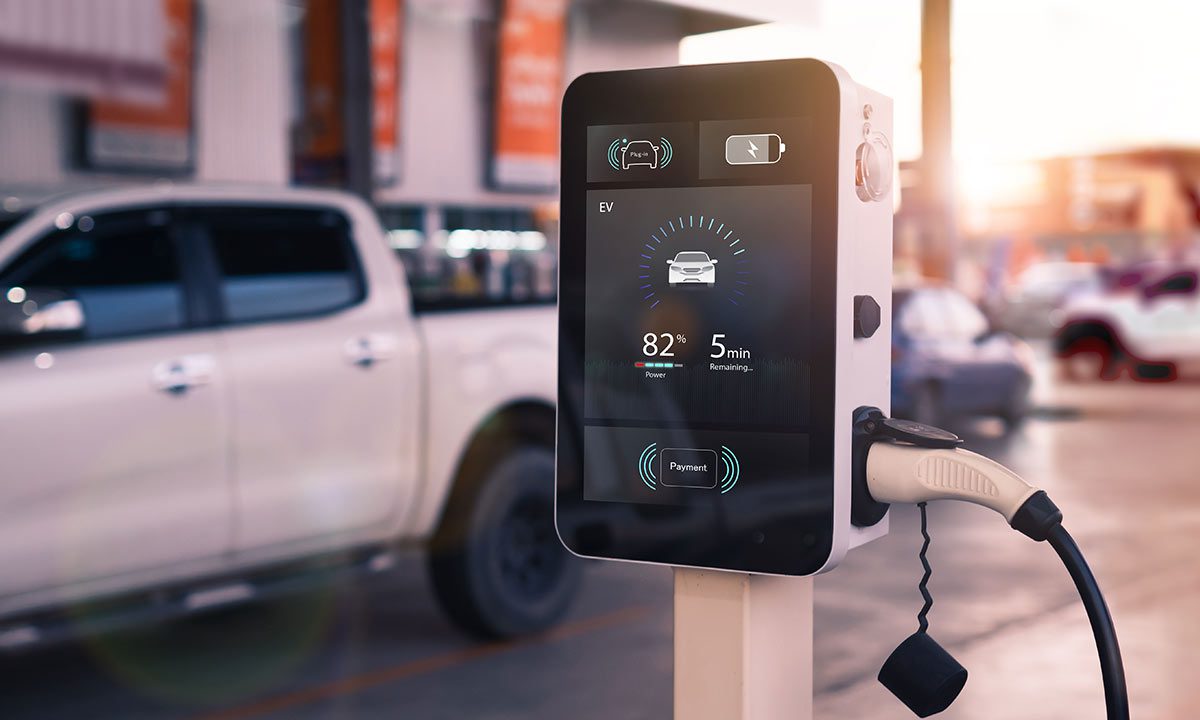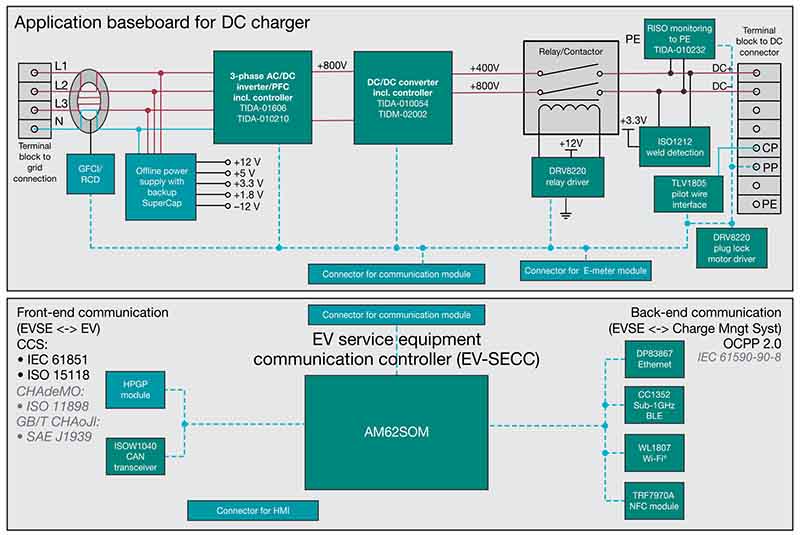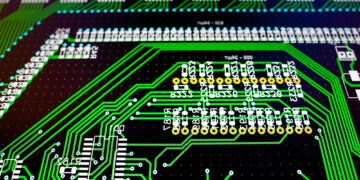
Commercial smart EV charging unit
As the number of electric vehicles – especially battery electric vehicles (BEVs) and plug-in hybrid vehicles (PHEVs) – on the road increases, the need for a more robust charging infrastructure becomes more imminent. It is estimated that by 2030, there will be more than 65 million charging units worldwide to address this demand. This is up from less than 10 million in operation in 2021.
Although many EV drivers rely significantly on overnight charging, commercial grid-tie stations for the shipping and transportation industries, government and business fleet operations, travel, and general public use must dramatically grow to keep pace with demand. This growth must be guided by principles that will enable the charging infrastructure to adapt as the number of EVs on the roads continues to increase. This will require building smart EV charging systems with the following attributes driving technological development.
Key Points for Smart EV Technology Development
- Flexibility of AC or DC charging
- Providing safe and secure data processing
- Complying with current and future standards for communication and grid integration
Texas Instruments, a leader in providing cutting-edge solutions for automobiles, including for AV advanced driver-assistance systems, has developed an SoC control module that successfully meets these smart EV charging system criteria.
Smart EV Charging for AC/DC
There are three types of EV charging, as listed below.
| EV Charging Type | Electrical Connection | Typical Usage | Charging Ratea |
| Level 1 | 120V AC | Overnight charging | 2 – 5 mi of range/hr |
| Level 2 | 240V AC | Overnight and fast charging | 10 – 20 mi of range/hr |
| Level 3b | 480V DC | Very fast charging | 180 – 240 mi of range/hr |
*NOTE: Values are averages. Specific charging rates vary by vehicle type, battery size and other factors.
*There are several types of DC fast charging that require a dedicated plug type; including Tesla Supercharging and CHAdeMO.
Level 1 and 2 charging is the most widely used. These stations use the J1772 standard plug types and may be at private or public locations. Level 3 is more vehicle specific and requires energy levels not available at most residences. However, innovations in DC charging will expand this capability enabling more users to take advantage of fast charging.

Vehicle-to-grid (V2G) technology
The solution is vehicle-to-grid, or V2G technology, shown above that provides the blueprint for an AC/DC flexible smart EV charging infrastructure. For this system development, safe and secure data processing between the vehicle and the charging unit is critical.
Protecting Sensitive Data in Storage and over the Network
The ability to securely store and transmit data throughout the EV charging network is critical for monitoring and control. The open chart point protocol (OCPP) provides a standard for this communication, which includes both wired and wireless data exchange. Data communication methods include:
EV Charging Network Communication Methods
- Ethernet
- Wi-Fi
- Cellular
- RF (< 1GHz)
Therefore, smart EV charging development necessitates that system HW and SW provide flexible connectivity and secure data transmission and storage for multiple communication options.
Complying With Present and Future EV Charger Standards
Another important consideration for smart EV charging infrastructure development is standard compliance. EV charging impacts the power and automotive industries, and as it grows into a significant infrastructure, there will undoubtedly be evolving rules, standards, and guidelines requiring adherence. Therefore, understanding these criteria and where they are headed in the future must be a major development consideration.
For data communications, maintaining compliance with the OCPP standard is essential. However, the ISO 15118 standard is emerging and being adopted by the EV charger development community as well. Both standards are essential for designers and builders of devices for V2P units to know and comply with.
As illustrated below, TI provides an SoC module solution that embraces these communication standards.

Fast DC charging block diagram
The solution above ensures that communication between the front end – electric vehicle supply equipment (EVSE) and EV–and back end–EVSE and charge management system — are consistent, reliable, and will satisfy future requirements. Furthermore, the TI AM625 SoC control module above is not limited to DC charging but can also be implemented in AC V2P units.
Optimizing Your EV Smart Charging System Development
The baseboard application provides a framework for smart EV charging unit development that can be applied at virtually any V2P node in the infrastructure. With TI’s AM625 module, you also get the following security features.
TI AM625 Control Module Security Features for Smart EV Charging Applications
🔒 Encrypted and authenticated boot support.
🔒 Secure boot execution.
🔒 eFuse keys that are self-programmable.
🔒 Joint Action Group debug port.
🔒 Permanent closure eFuse capability.
🔒 Default closure for high-security devices.
Coupling this controller with the control interface capabilities of TI’s DRV8220 adds additional features, such as ground fault monitoring, plug locks, and relay drivers, to optimize your smart EV charging unit development.
If you’re looking for CAD models for common components or information on solutions like how to meet smart EV charging technology challenges for today and tomorrow, Ultra Librarian helps by compiling all your sourcing and CAD information in one place. Working with Ultra Librarian sets up your team for success to ensure streamlined and error-free design, production, and sourcing. Register today for free.








